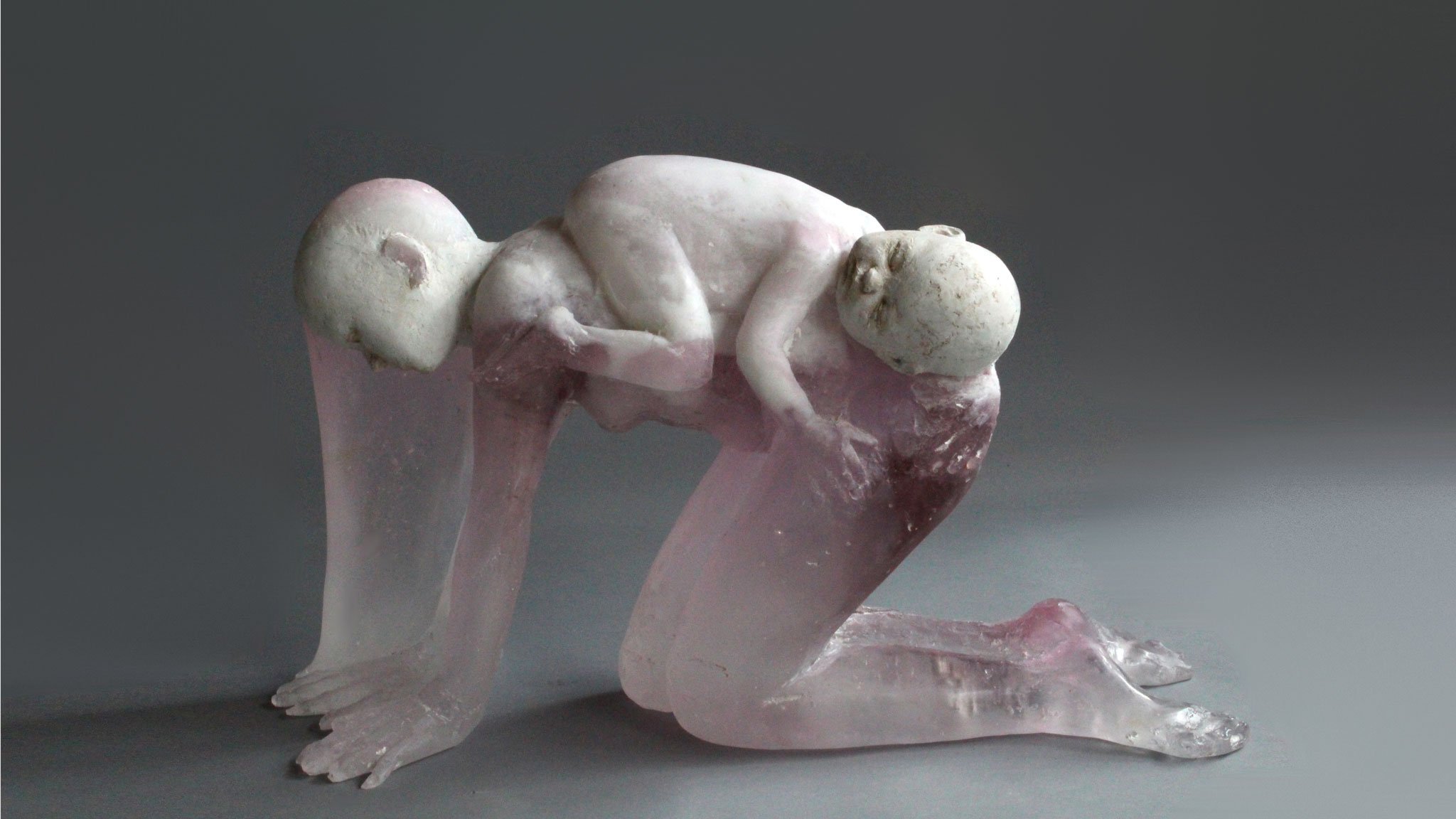Sculptures and Storytelling
In this lesson, students meet artist Christina Bothwell from the Craft In America STORYTELLERS episode. Bothwell creates figural sculptures that mix portions of opaque, unglazed clay with translucent glass. The translucent glass adds to the dreamlike quality of the sculptures. As she states in the above quote, she tells stories through her sculptures. The lesson focuses on storytelling as a basis for art making. Through investigations, students consider the stories suggested in the artist’s works and then think about developing characters for their own sculptural artworks. In studio work, students use clay to create characters that engage a viewer’s interest and suggest a story.
DOWNLOAD
Sculptures and Storytelling
Full Guide
Background Reading
Lesson Overview
More Information
Resources and Material for Teaching
Discussion Questions
Sculptures and Storytelling
Vocabulary
Vocabulary and Key Terms
Worksheet #1
What’s Going On?
Worksheet #2
What Story Will You Tell?
“I am a storyteller and I love stories. If something really touches me I have to process it and get it out by doing a piece.”
– Christina Bothwell
LESSON OVERVIEW
Grade Level: 7–12
Estimated Time: four 45 minute class periods
Craft In America Theme/Episode: STORYTELLERS
Background Information
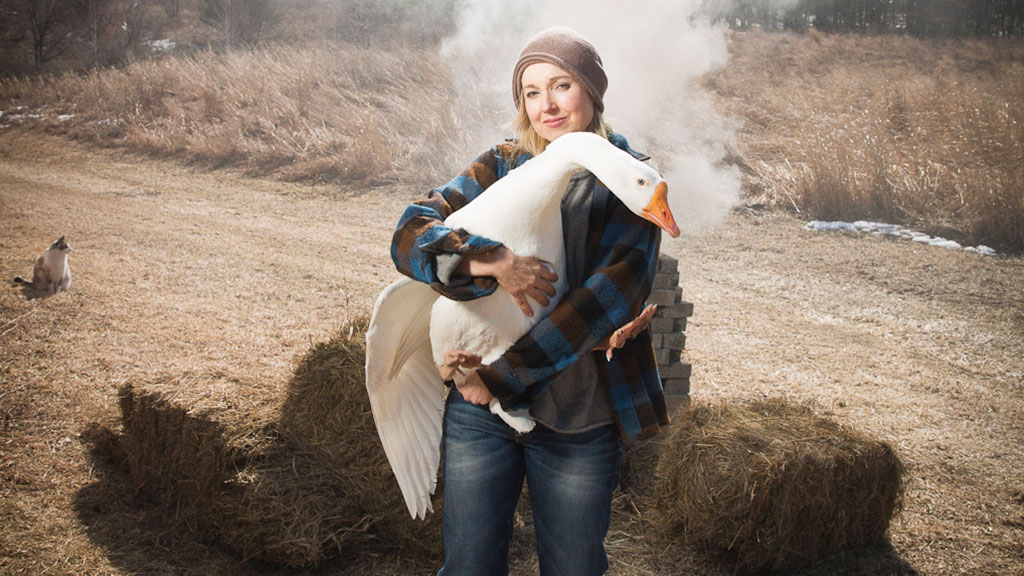
When Christina Bothwell moved from New York City to a country setting in the town of Stillwater in Central Pennsylvania, she found a connection to nature that further inspired her work. An initial dislike for glass (she thought it was “too shiny”) changed after she took a glass workshop. “I realized that glass can do everything that clay can, but it transmits light. It had so much potential.” Bothwell combines clay and glass in a complex practice to create sculptures of humans, animals, and human/animal hybrids that often have a dreamlike, fantastical quality. Bothwell’s husband, Robert Bender, is an illustrator of children’s books and sometimes collaborates with her on the sculptures.
Key Concepts
- A sculpture can convey mood and suggest a story.
- Sculptures can suggest something that is real or true-to-life, fiction, or a combination of both.
- Body position and gesture in a sculpture can create interest and suggest a story.
Critical Questions
- How can a sculpture convey mood and suggest a story?
- How can sculptures suggest something that is real or true-to-life, fiction, or a combination of both?
- How can you include body position and gesture in a sculpture to suggest a story?
Objectives
Students will:
- interpret mood and narrative suggested by sculpture.
- make a sculpture that is realistic, fictional, or a combination of both.
- sculpt a figure in which body position and gestures create interest and suggest a story.
Vocabulary
Fiction, non-fiction, character, gesture, translucent, opaque, ethereal, hybrid, tableaux vivant, narrative
Interdisciplinary Connection
- Language Arts: The storytelling theme of the lesson includes practicing story writing, discerning between fiction and non-fiction, and developing characters.
National Standards for Visual Arts Education
- Visual Arts/Creating #VA:Cr3.1.Ia
Process Component: Reflect Refine Continue
Anchor Standard: Refine and complete artistic work. - Visual Arts/Presenting #VA:Pr5.1.8a
Process Component: Analyze
Anchor Standard: Develop and refine artistic techniques and work for presentation. - Visual Arts/Responding #VA:Re8.1.Ia
Process Component: Analyze
Anchor Standard: Interpret intent and meaning in artistic work. - Visual Arts/Connecting #VA:Cn10.1.IIa
Process Component: Synthesize
Anchor Standard: Synthesize and relate knowledge and personal experiences to make art.
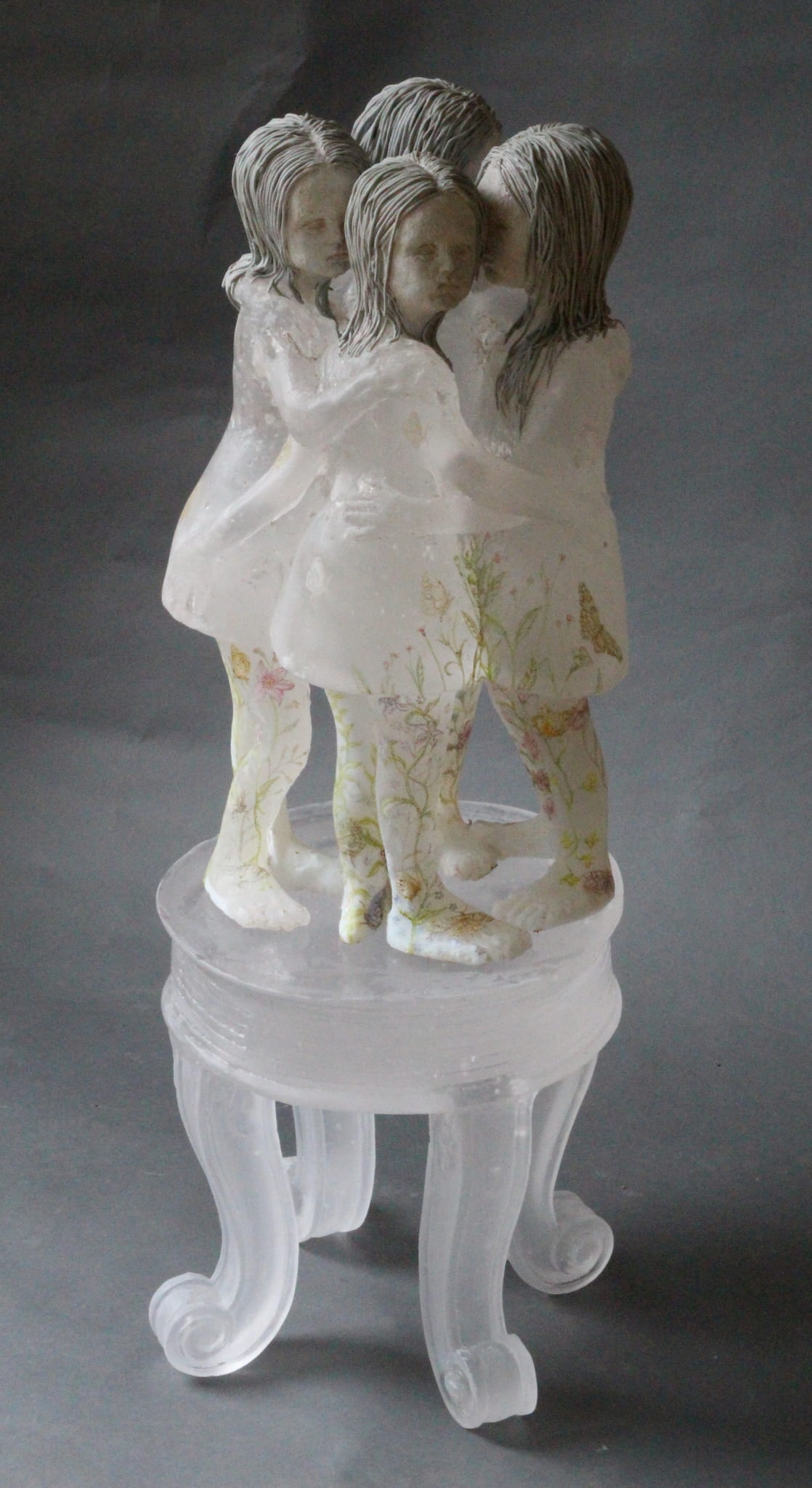
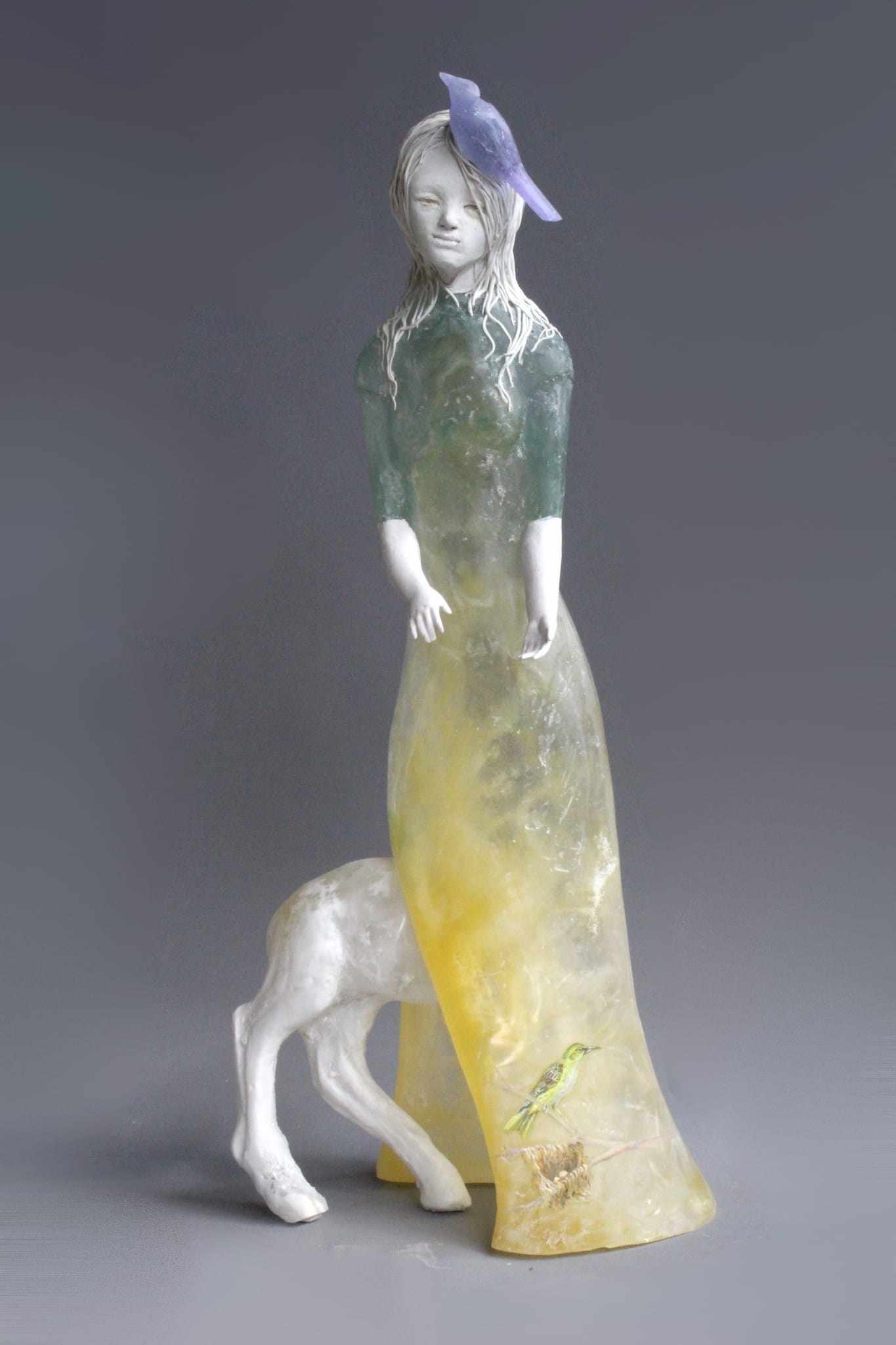
Resources and Materials for Teaching
Resources
- View Craft in America STORYTELLERS
- Christina Bothwell’s website, christinabothwell.com
Worksheets
- #1: What’s Going On?
- #2: What Story Will You Tell?
Materials
- Computers or other devices for viewing Christina Bothwell’s website • Large newsprint paper for gesture drawing
- Markers or pastels for gesture drawing
- Clay
- Clay modeling tools
- Kiln for firing
- Acrylic or watercolor paints
- Paintbrushes
- Scraps of wood for sculpture bases
- Hot glue gun or other glue for attaching sculptures to bases
INSTRUCTIONAL STRATEGIES
Students begin by examining images of Bothwell’s work. Bothwell makes figural clay and glass sculptures. The artist describes herself as a storyteller, and her sculptures have ethereal or dreamlike aspects. Students physically recreate the poses in the tableaux vivant form, and use this strategy to imagine what the characters may be thinking or experiencing, and what stories the artwork evokes. Afterwards, they view the segment in the Craft in America STORYTELLERS episode featuring Christina Bothwell. Students practice developing a story and character. Then they pose for each other, creating fast paced gestural drawings. Finally they sculpt a character or characters in clay, keeping the importance of pose and gesture in mind.
(Video and discussion: one 45 minute class period)
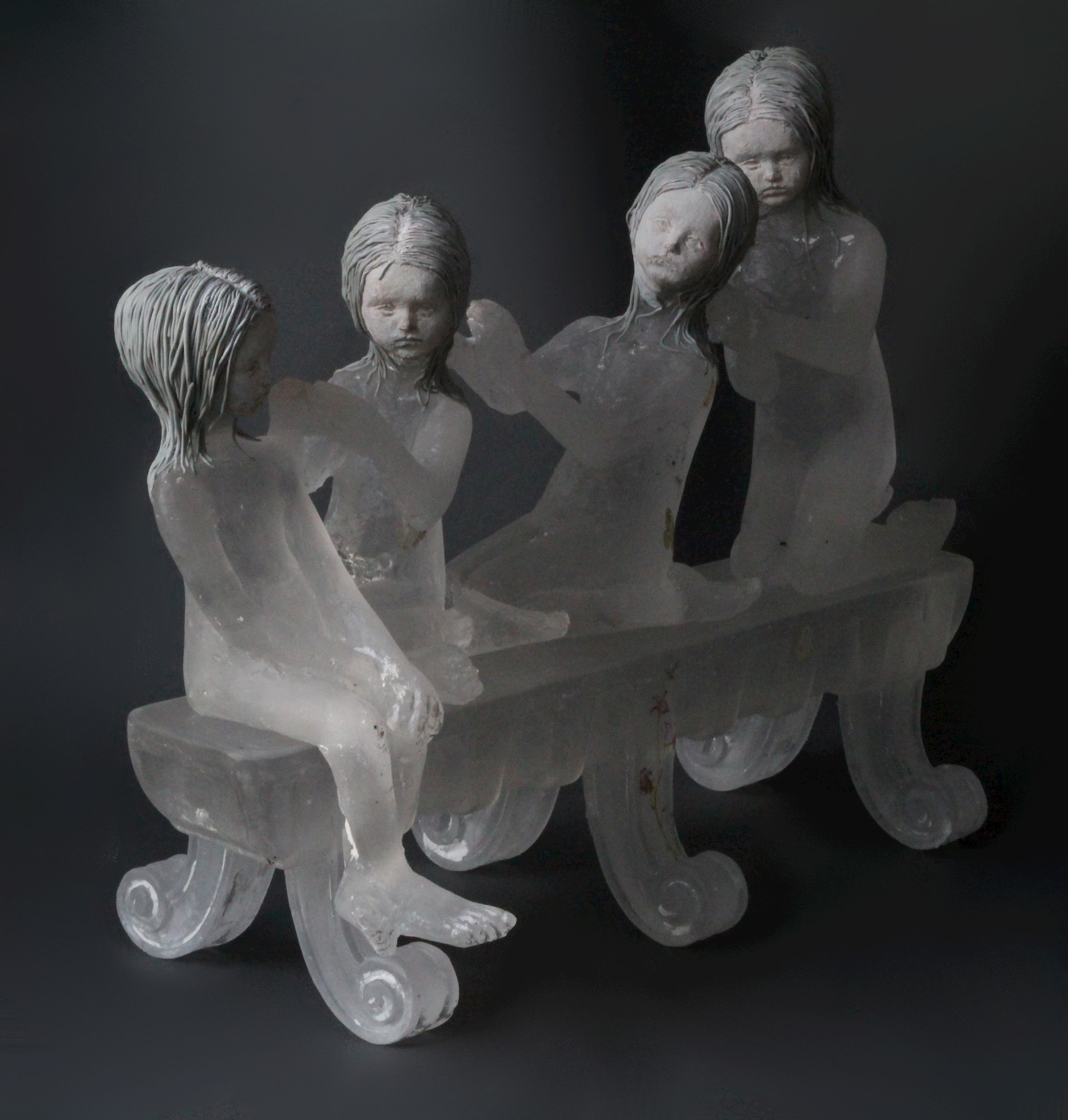
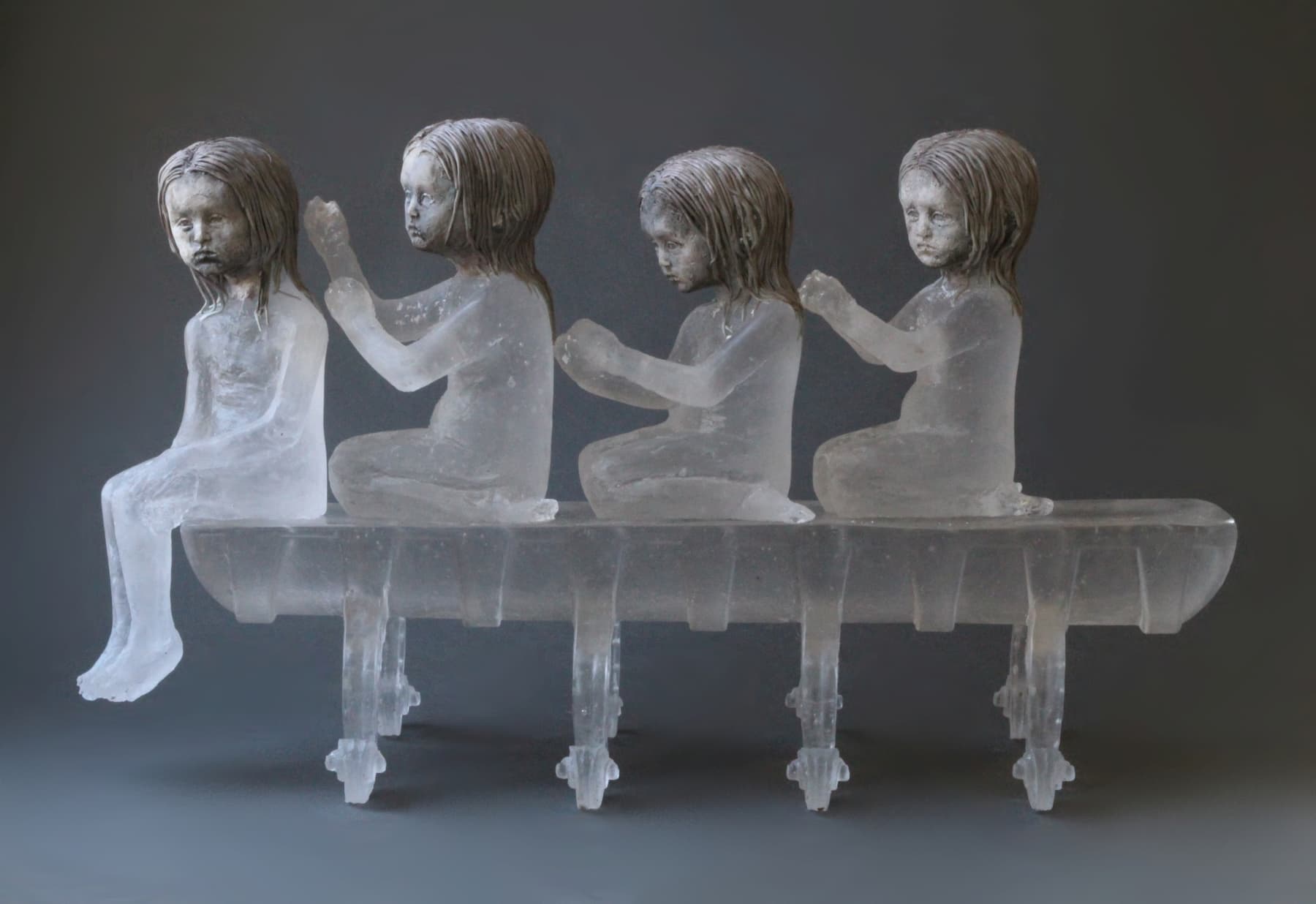
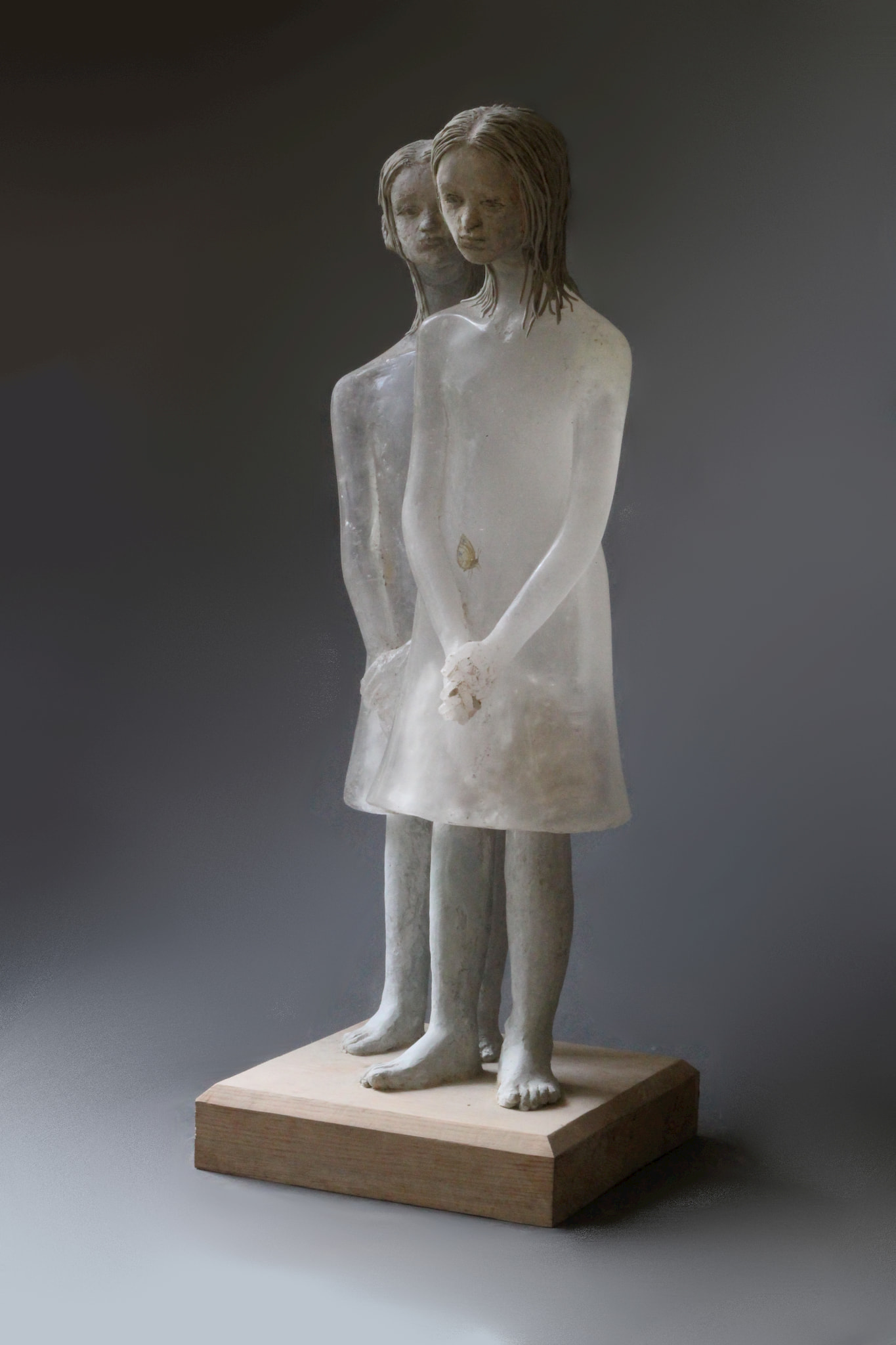
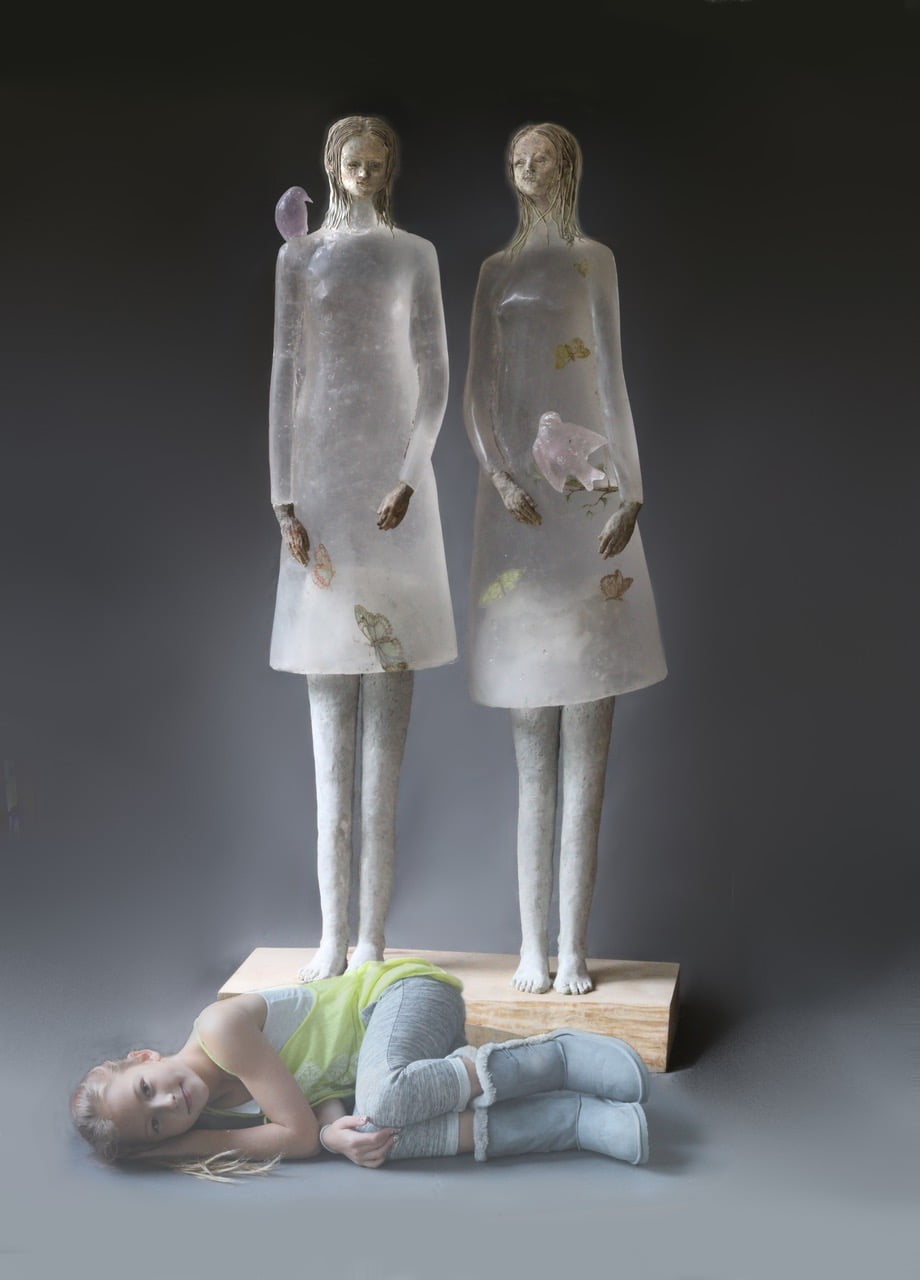
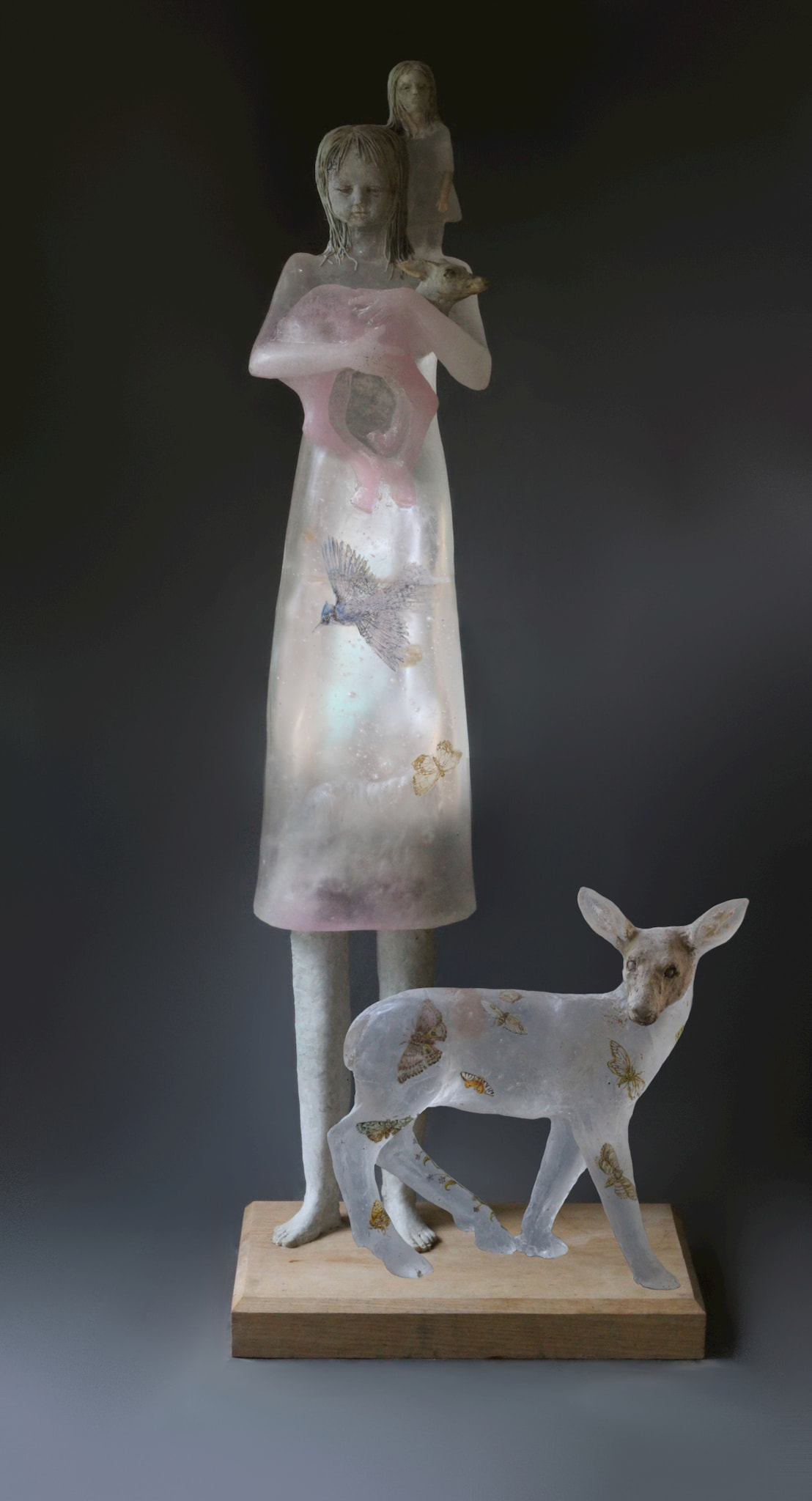
Before Viewing
Introduce the scope of the lesson to students, sharing the key concepts, critical questions, and objectives. Have students spend some time with the artist’s works, noting details and constructing interpretations. One productive initial investigation is a tableaux vivant, where groups of students strike and hold a pose in imi- tation of a work of art. This might include the following instructions:
- Have students divide into small groups. Provide each group with a separate image of Bothwell’s work, reminding them not to show their image to any other group.
- Allow students to spread out (perhaps some in the hall nearby). They should decide how to recreate the sculpture in a pose. Let students know they will be creating a tableaux vivant, or “living picture” for the rest of the class to view. Students may want to use some furniture or props. Remind students to think about their gestures and facial expressions. (“What moods or feelings does this artwork suggest?”) Encourage students to practice holding their pose for at least 30 seconds to 1 minute: It is a challenge to be serious and silent for that long!
- Let the first group of performers pose, and after a bit, hand out the images of the work being presented so the class can see the source. After some bows and applause, continue with the next group.
- As the groups take turns posing, it is a good time to ask questions of the presenters and the group. Some possible questions are: “What do you think the characters are thinking about (or saying)? “ “What does the pose, or body language, and the facial expression make you think about the character?” “What might have happened right before this moment? Right after?” “What are some descriptive words that would apply to this work? Does it have a certain mood?”
Share a bit about what students will see. Distribute Worksheet #1: What’s Going On? This asks students about the video. Have students read aloud the questions before beginning. Students might want to work together, noticing and sharing potential responses. Pause the video when a work is shown so students can write down the title. The pauses are good times for students to respond to the works they find most interesting.
Studio Investigations:
Have several students share their stories from Worksheet #1 and the sculpture they wrote about. You might want to compare two stories about the same sculpture as examples of different viewer reactions to an art- work. Help students with Worksheet #2, which explores their own ideas for a story. Following this, students will practice capturing gestures as they draw each other, and then move to clay sculpting.
Studio Production
(two to four 45 minute class periods)
Now that students have a beginning of an idea for a clay character, look for volunteers to pose so the class can practice gesture drawings using pastels or markers (so they can’t erase and have to draw fast) on newsprint paper. Gesture drawing is intended to help them look more closely at things like body proportions, how arms fold and what happens to legs when people sit. A student model might safely stand on a chair or desk to pose. It’s helpful to keep the poses short; some 30 seconds, some one minute, and perhaps 2 minutes. Students modeling are often helped by some teacher direction for posing, as it gives them permission to “act out” a pose.
When students are warmed up with drawing, they can move to working with clay.
One method for making clay figures is to start with a thick rectangular slab of clay that is about as wide and high as the figure will be. Cut a figure outline similar to a gingerbread man cookie from the slab. Each limb, the torso, and the head can then be molded and modeled. Feet can be bent forward at the bottom of the legs. The clay figure can be pinched, carved, impressed and incised with tools. Details can be added this way or by attaching small pieces with slip (a mix of clay and water.) For drying, place the clay figure on a cardboard base in the desired pose. Use crumpled newspaper to support the pose while it dries.
Let clay figures dry completely. After figures are fired, students may want to add detail with paints. They can glue the figures to the wooden bases. Hot glue may work for attaching.
CLOSING STRATEGIES
Reflection
When studio work is complete, allow students to examine and appreciate each other’s work. Students might want to arrange the figures in relation to others and see if new meanings are suggested by the positioning. You may wish to suggest that students compose an artist’s statement to accompany their completed sculpture. They can write an accompanying character sketch or story idea, or they may prefer to have viewers wonder about the character(s) and story rather than have it spelled out. Students may have good ideas about how and where to display their artworks, and what to title the exhibition.
Assessment
In discussions with the class and with individual students throughout the lesson; through students’ writings and responses; and/or by reviewing the students’ studio work, it should be evident that the student:
- Interpreted mood and narrative suggested by sculpture.
- Defined their sculpture as realistic, fictional, or a combination of both.
- Sculpted a figure in which body position and gestures create interest and suggest a story.
Extensions
After students finish their characters in clay, you might have the class investigate sculptor Cristina Cordóva and photographer Cara Romero in the Craft in America IDENTITY episode. Both artists make use of characters or figures, and deal with positioning the body, capturing expression, and indicating a sense of story.
Authors:
The Education Guide for STORYTELLERS was developed under the direction of Dr. Marilyn Stewart, Professor Emerita of Art Education, Kutztown University of Pennsylvania, Kutztown, PA. Lead author for Sculptures and Storytelling is Dr. Amy Albert Bloom, August 2020.
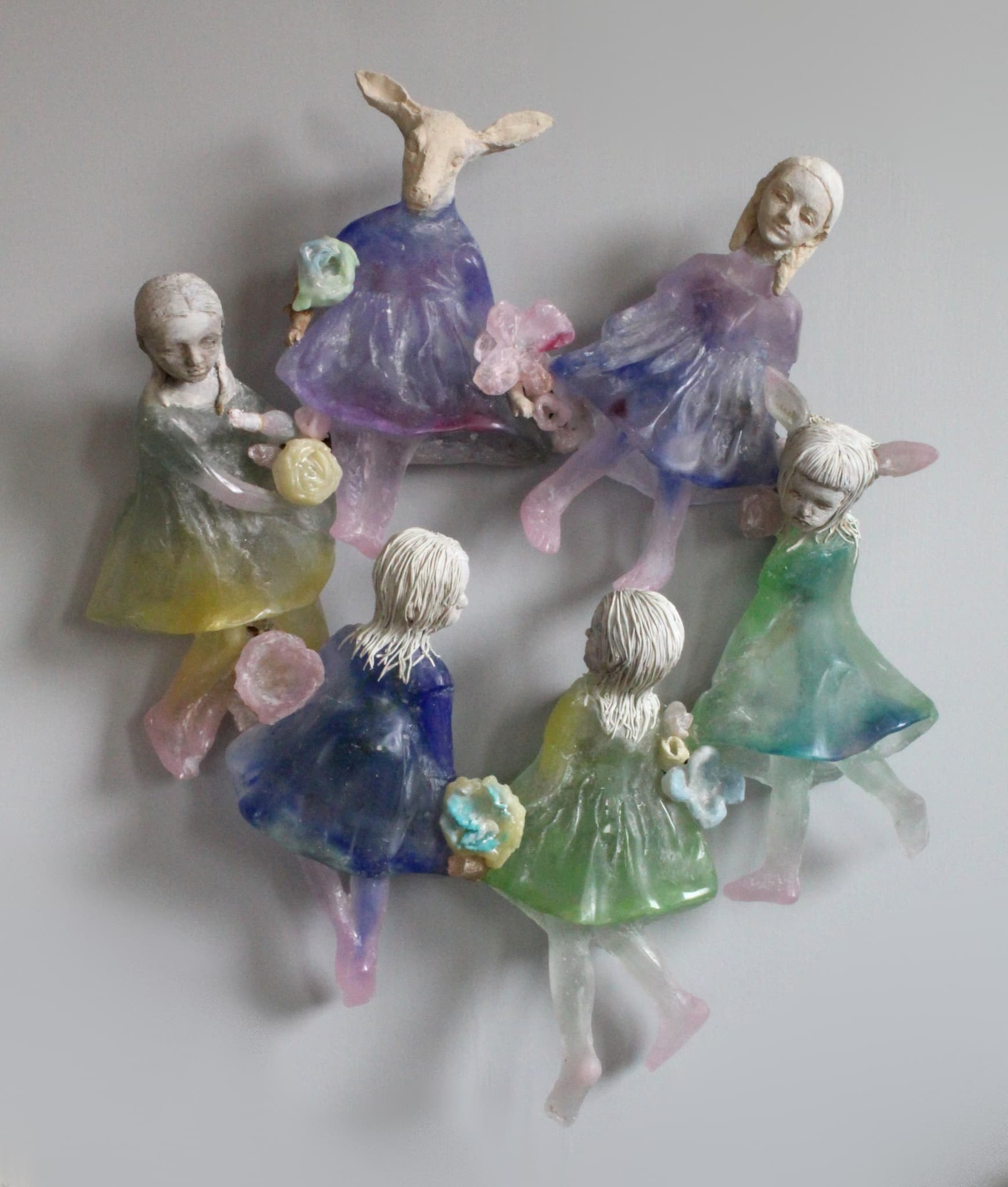
Worksheet #1: What’s Going On?
“Like this piece, she’s sheltering a deer in the bottom. When I made this piece it was hunting season and I want to gather all the animals that are hunted, I would like to just gather (them) into my barn and keep them for the entire hunting season so nobody can shoot them.”
– Christina Bothwell
- You have examined and acted out Christina Bothwell’s work. Now you will hear her talk about it. Write down the titles of her artworks as you see them. (Your teacher will pause the video.) There are about 14 (some others are shown but without titles.)
After viewing: - After viewing the video, what do you think Bothwell’s sculptures are about? She mentions many things she is interested in. How does the artist’s discussion of her work inform your ideas? Discuss with your partner. Do the titles give you hints?
- Do you think Bothwell’s sculptures are real or fictional? Why? What does your partner think? Look at the quote above: Does it describe something real or fictional? Could it be both?
- Choose one of the sculptures. While you might not know the story that the artist was thinking about, try to imagine a story that the sculpture could suggest.
- Next, working with your partner or on your own, compose a five- sentence story about the sculpture. Think about the following:
• Who is the character (or characters) in the story? Are they human?
• Where does the story take place?
• When does the story take place?
• What happens?
Worksheet #2: What Story Will You Tell?
“I am a storyteller and I love stories. If something really touches me I have to process it and get it out by doing a piece.”
– Christina Bothwell
- Now that you have learned about an artist who tells stories in her work, think about a story you would like to tell in an artwork. You will be making the character or characters in clay.
- Write down some ideas for a story in just a few words. Your story can be one scene or moment; a part of a story. Do you want it to be based on something real or will it be fictional?
- Sketch some ideas on this paper.
- Go back to #5 on the first worksheet. Do these questions help you to think about what you want to do?
- What characters will you need to tell the story? Will you need more than one figure?
- Bothwell added “another layer of narrative” (story) to some of her sculptures by painting on them. Would you like to do that? She added flowers, vines, insects, and birds. What would you add?
